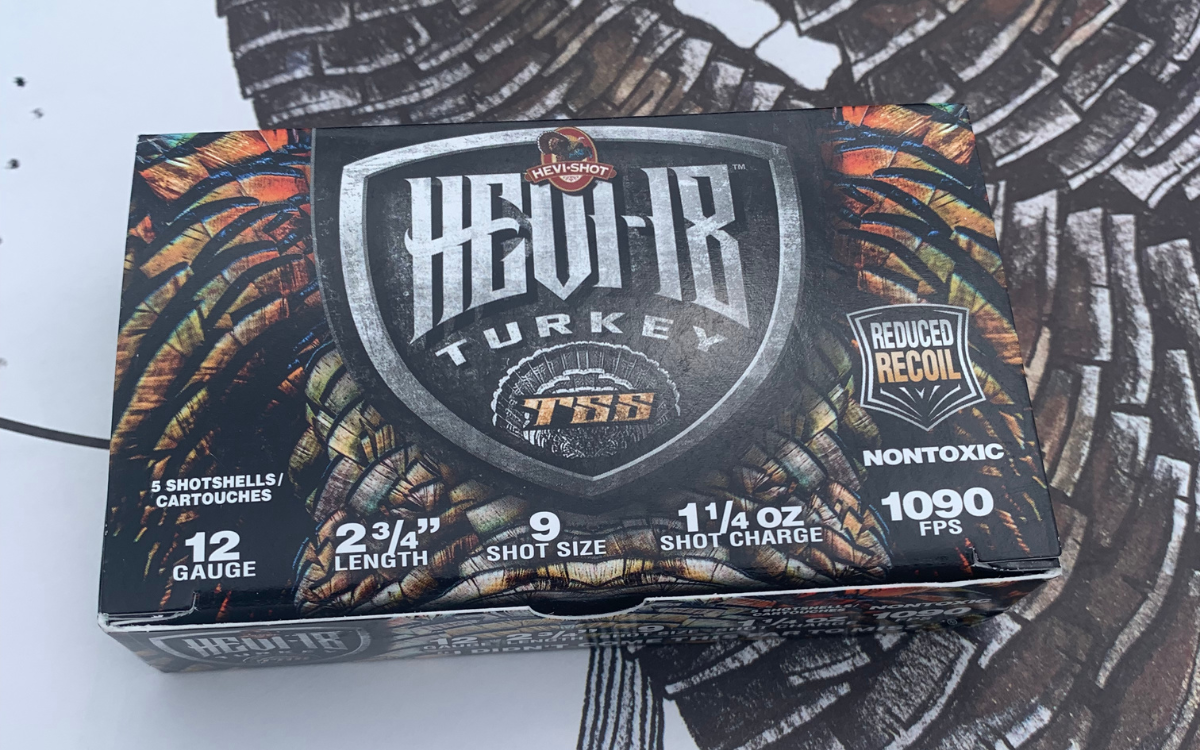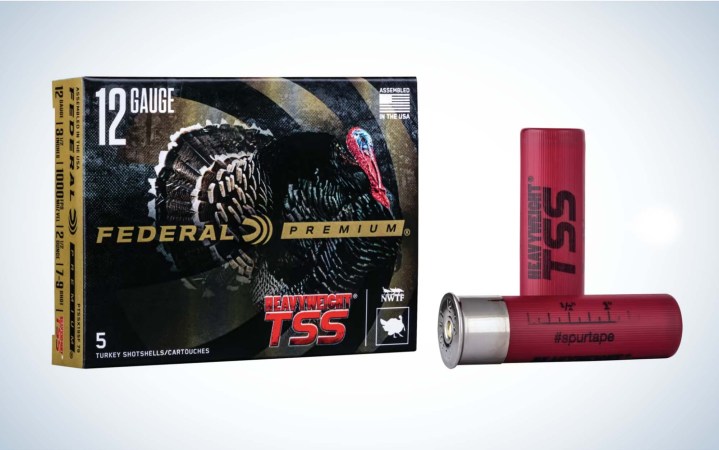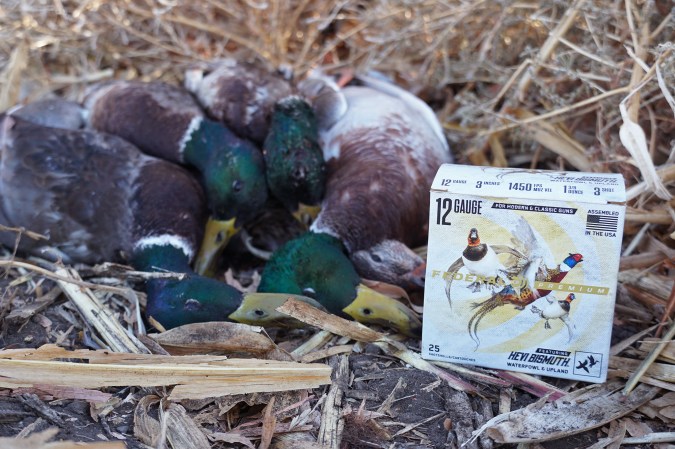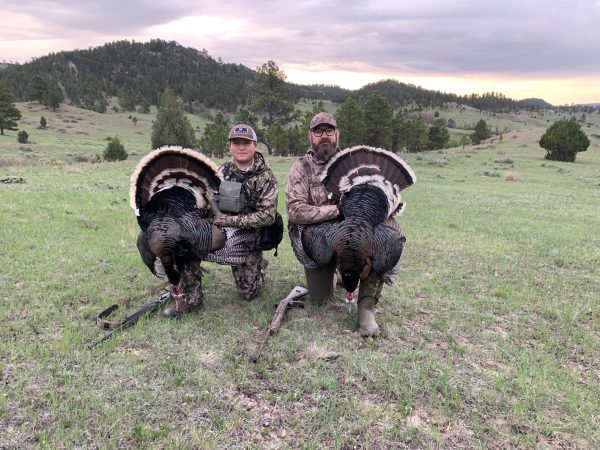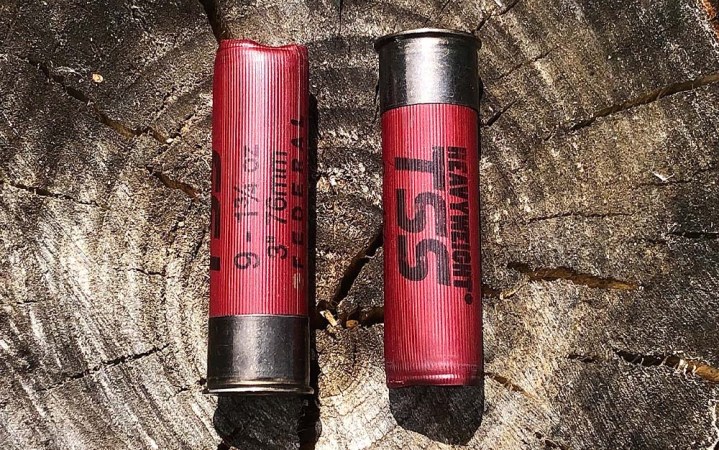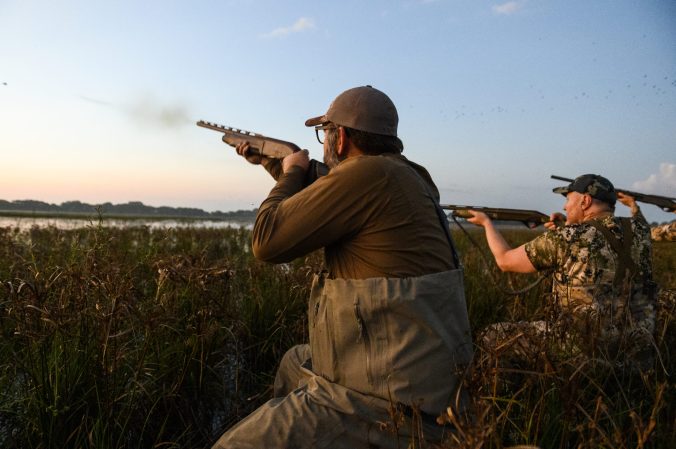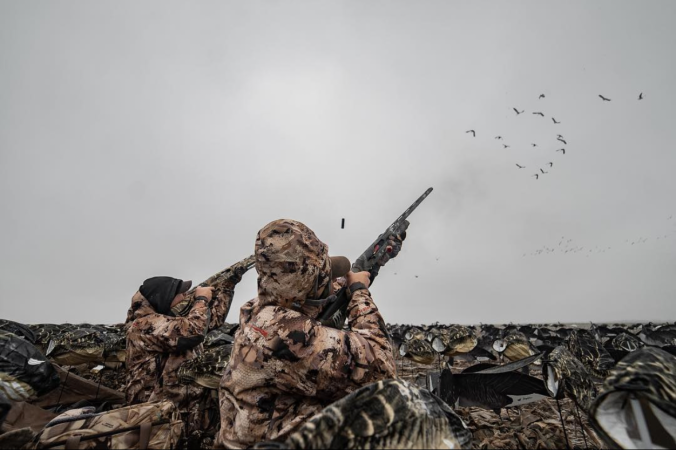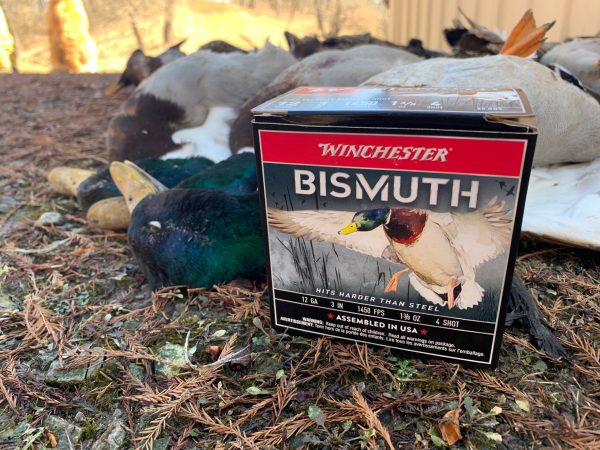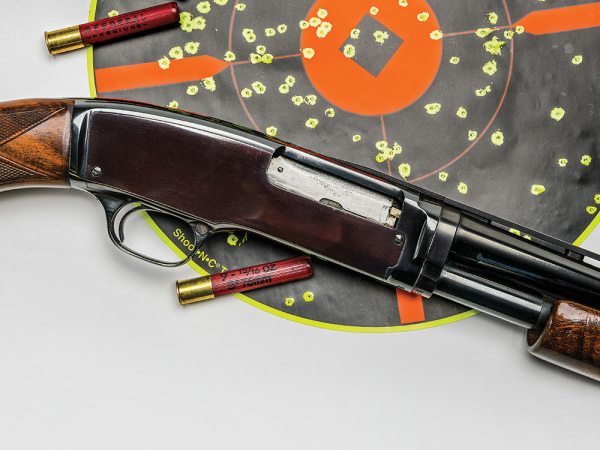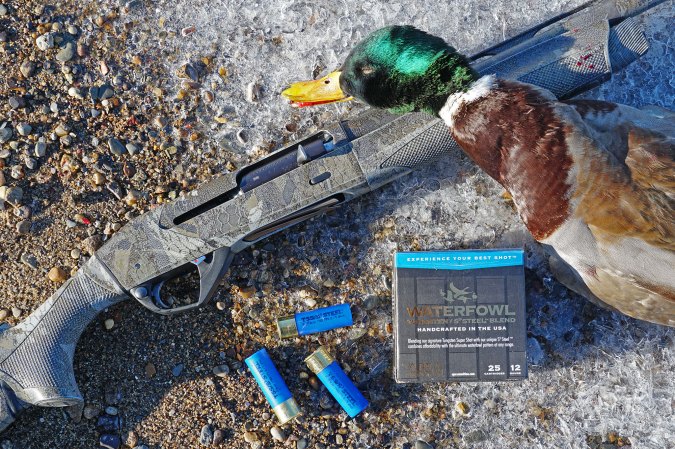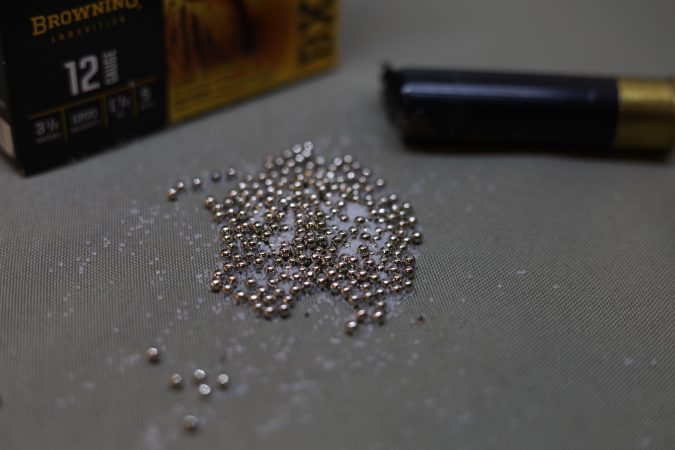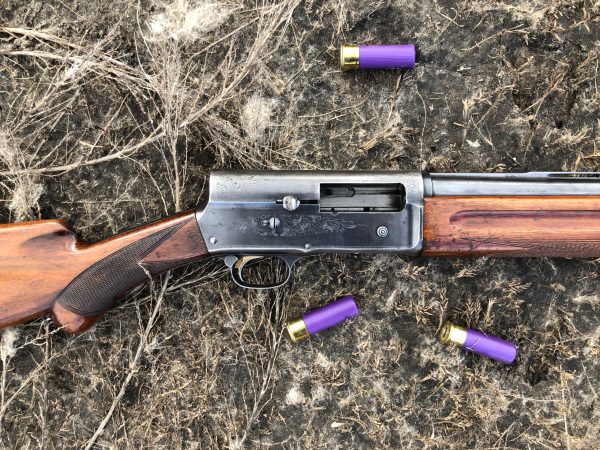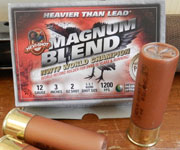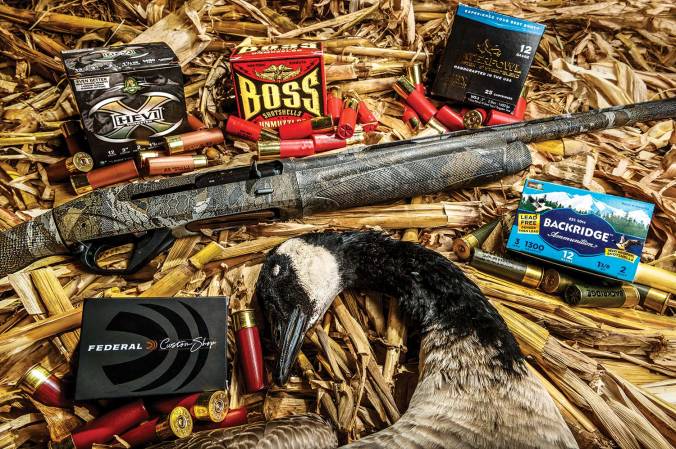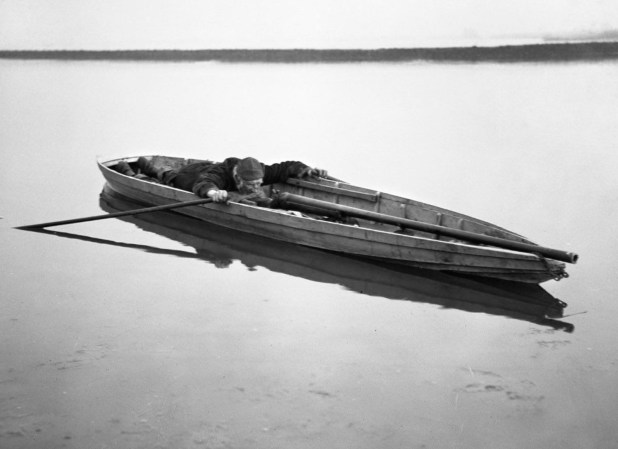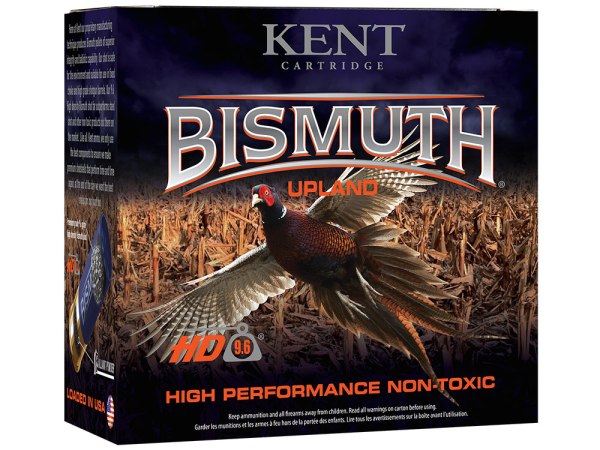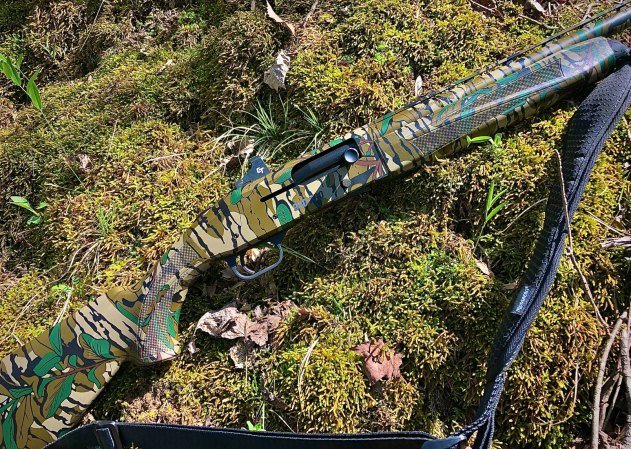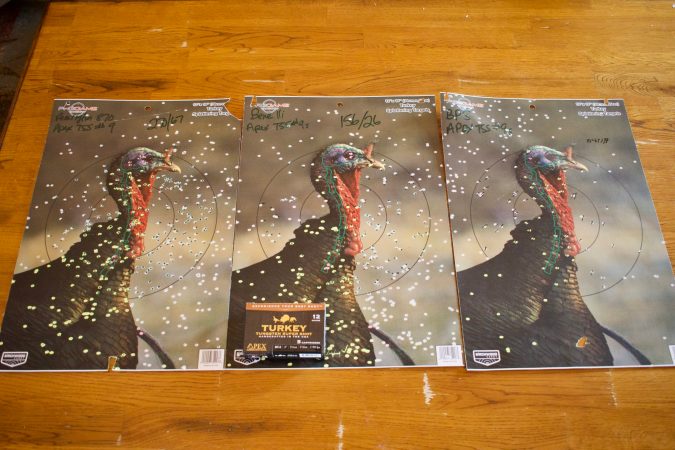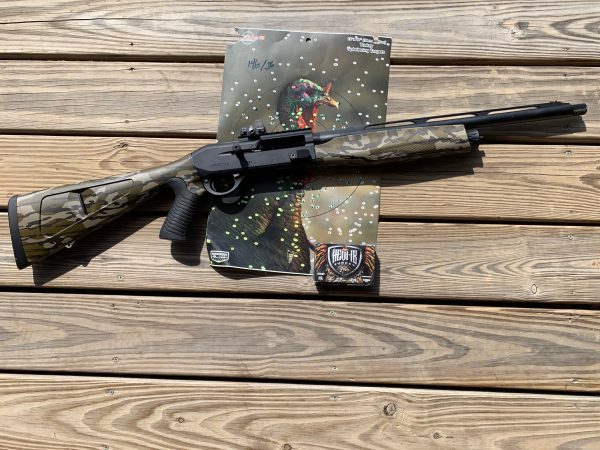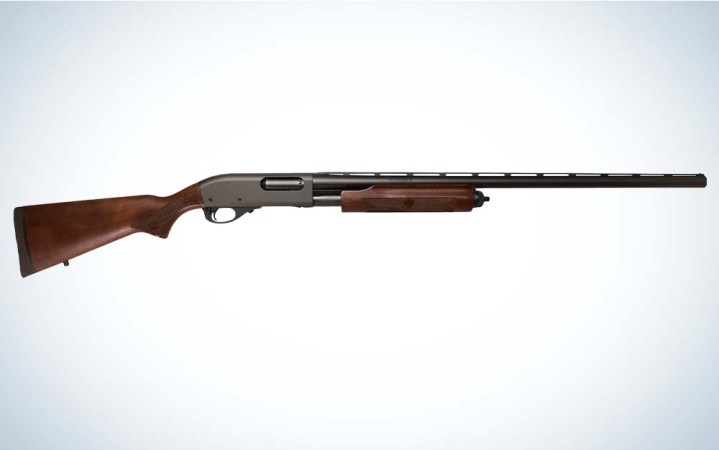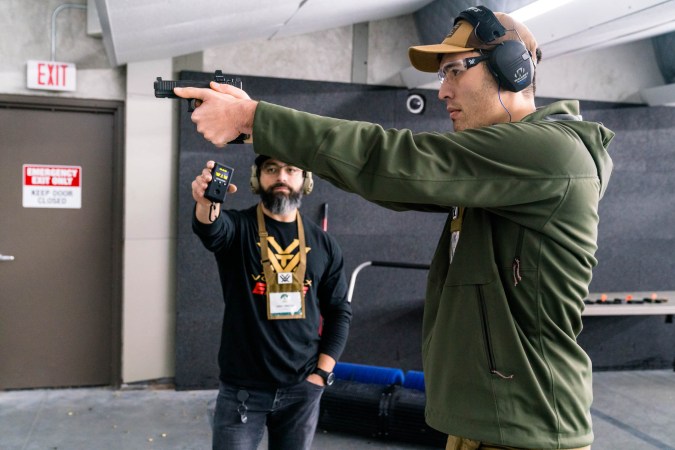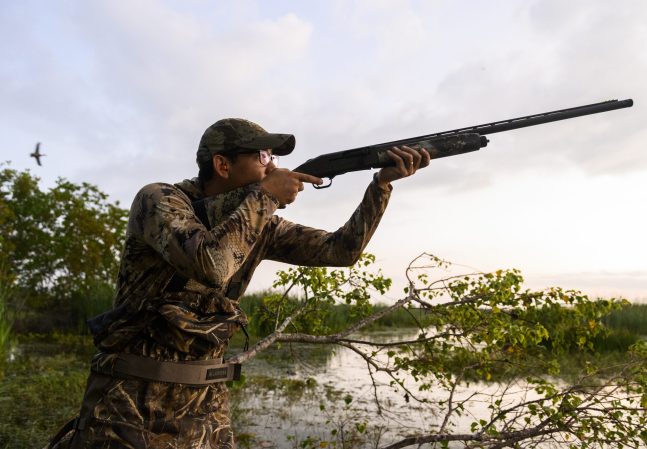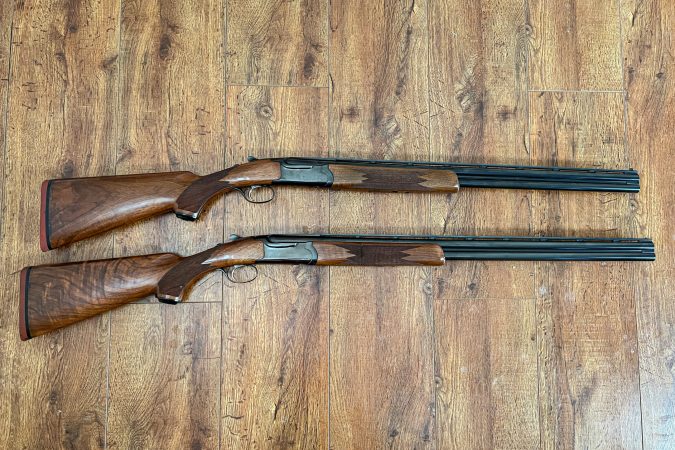We may earn revenue from the products available on this page and participate in affiliate programs. Learn More ›
The hottest magnum 12-gauge turkey loads are incredibly effective, but they aren’t always necessary. At 30 yards, a 3.5-inch turkey load delivering a 2 ¼-ounce payload of Tungsten Super Shot is, well, overkill. Put simply, you do not need that many high-density TSS pellets to cleanly kill a turkey at that range. And sadly, Newton’s Third Law applies to turkey hunting too. In order to send that monster payload down range, the equal and opposite reaction is that you’re going to get rocked with teeth rattling recoil.
That’s why so many turkey hunters are opting for sub-gauges like the 28-gauge and .410-bore for turkey hunting. With TSS, these gauges are still effective at 40 yards and in, and they’re much easier on the shoulder. Now, Hevi-Shot is offering “reduced recoil” 12-gauge TSS loads which have lighter payloads at lower velocities.
These new reduced recoil shells are loaded with the typical tungsten super shot which is a dense (18 g/cc) and expensive shot material. Because of this, the loads are spendy at over $10 per shell. Hevi Shot’s Hevi-18 Reduced Recoil TSS is a 2 3/4-inch, 9-shot 12-gauge load with a lower velocity—1090 FPS compared to typical 1200 FPS of a 12-gauge No. 9 load.
So how did they do on the patterning board compared to standard TSS loads?
How I Tested the Hevi-Shot Hevi-18 Reduced Recoil Loads
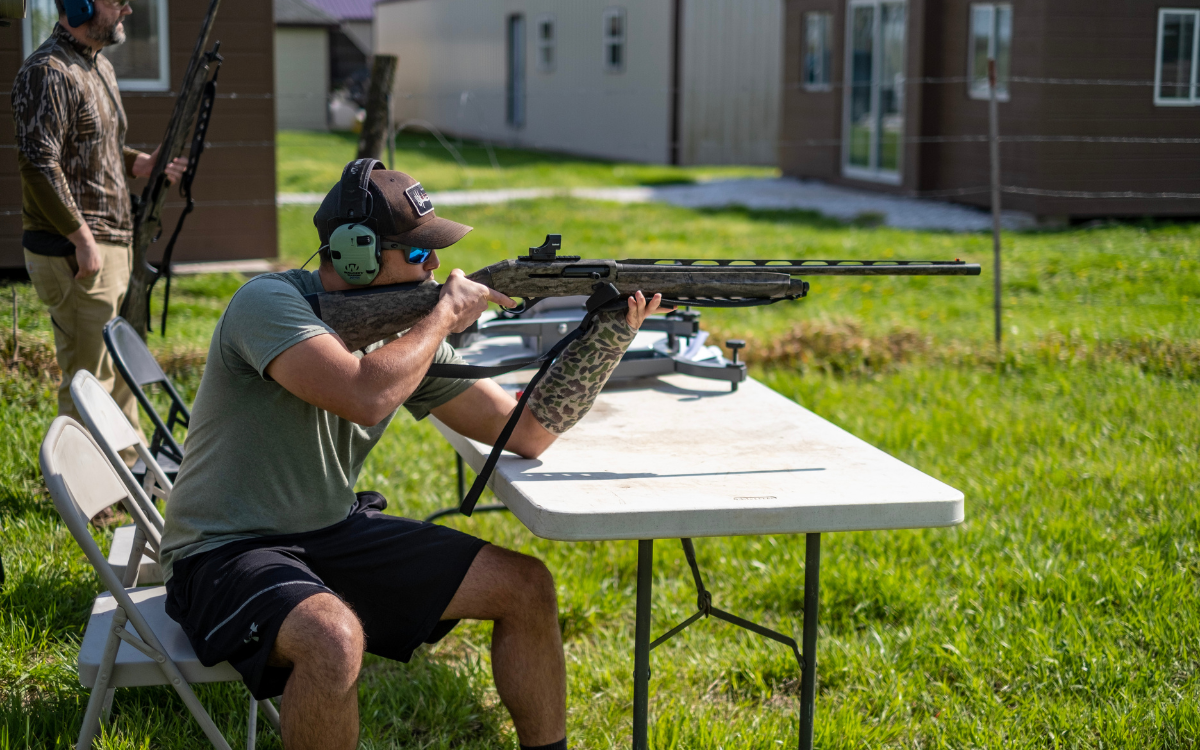
For this test, I shot the low-recoil load and a standard TSS load at 30, 40, 50, and 70 yards. To minimize variables, both loads were shot from the same Stoeger M3500 Turkey 12-gauge using the stock Stoeger turkey choke with a restriction of .661. I mounted a Bushnell RXM-300 red dot on the Stoeger to help with precise aiming at the longer ranges. The day of the test was a perfect mid-April day, with temperatures around the mid-40’s and a breeze of about 10 mph. Unfortunately, because of limited ammo, we were only able to shoot one load each at the various ranges.
After shooting both loads side by side, I measured the area with the densest number of pellet strikes near the aim point, drawing a 10-inch circle around that area. This was to help give the pattern a true score in case I pulled the shot a little left or right. Once the 10-inch circles were in place, I counted the number of pellet strikes to give a true comparison of how similar, or different, the reduced recoil loads performed to the standard Federal Heavyweight loads. For reference, 100 hits inside a 10-inch circle is lethal performance (assuming you also have enough penetration), however, in my opinion, even 85 hits in a 10-inch circle is solid. With less than 85 strikes, there will be gaps in the pattern, which means a higher risk of wounding a bird.
Key Features of the Federal Heavyweight TSS
- Cartridge Length: 3 inches
- Payload: 1 3/4 ounces
- Shot Size: 9
- Pellets Per Shell: 634
- Velocity: 1200
- Price: $74.99 (per box of 5)
Key Features of the Hevi-Shot Hevi-18 Reduced Recoil TSS
- Cartridge Length: 2 3/4 inches
- Payload: 1 1/4 ounces
- Shot Size: 9
- Pellets Per Shell: 453
- Velocity: 1090
- Price: $72.99 (per box of 5)
30-Yard Test Results
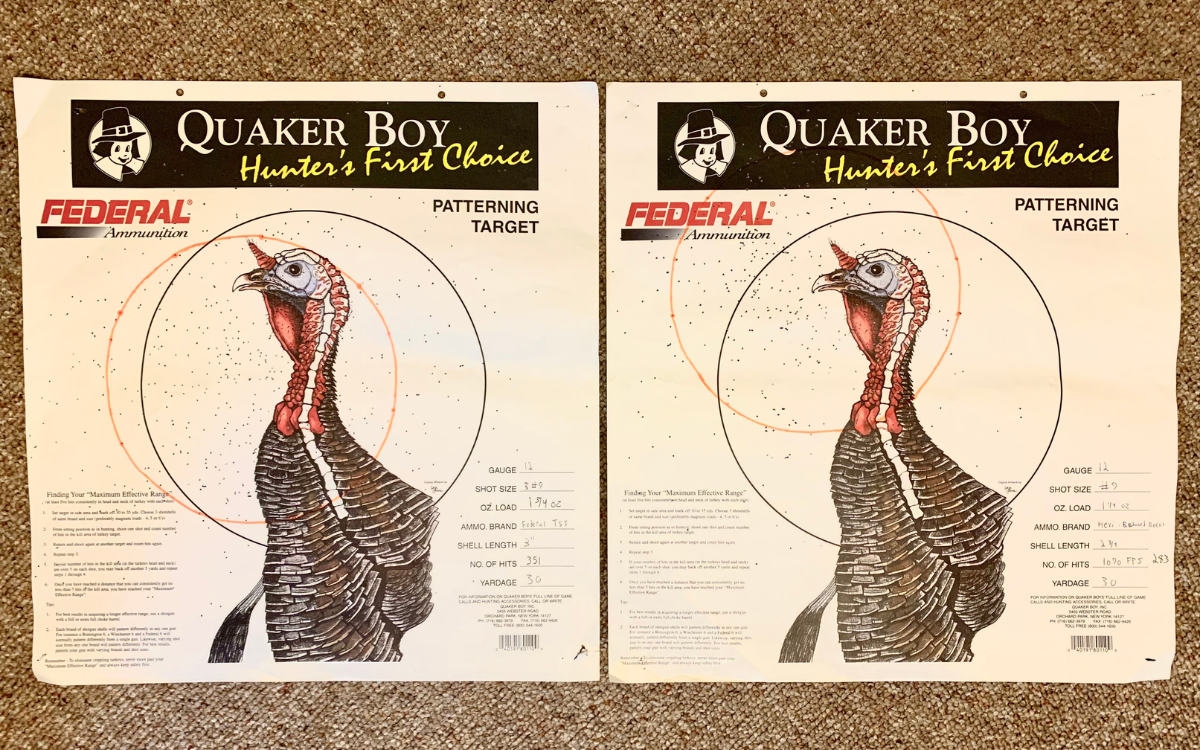
The 30-yard test was eye opening. The Federal Heavyweight recorded 351 hits in the 10-inch circle, while the Hevi-18 Reduced Recoil had 283 hits. To say that these patterns would be effective would be a bit of an understatement. While shooting, I was surprised by just how light the Hevi-18 recoil actually was. There was substantially less felt recoil while shooting these shells compared to other TSS loads. I’d say the Hevi-18 Reduced Recoil are comparable to a typical pheasant load. More on this later.
40-Yard Test Results
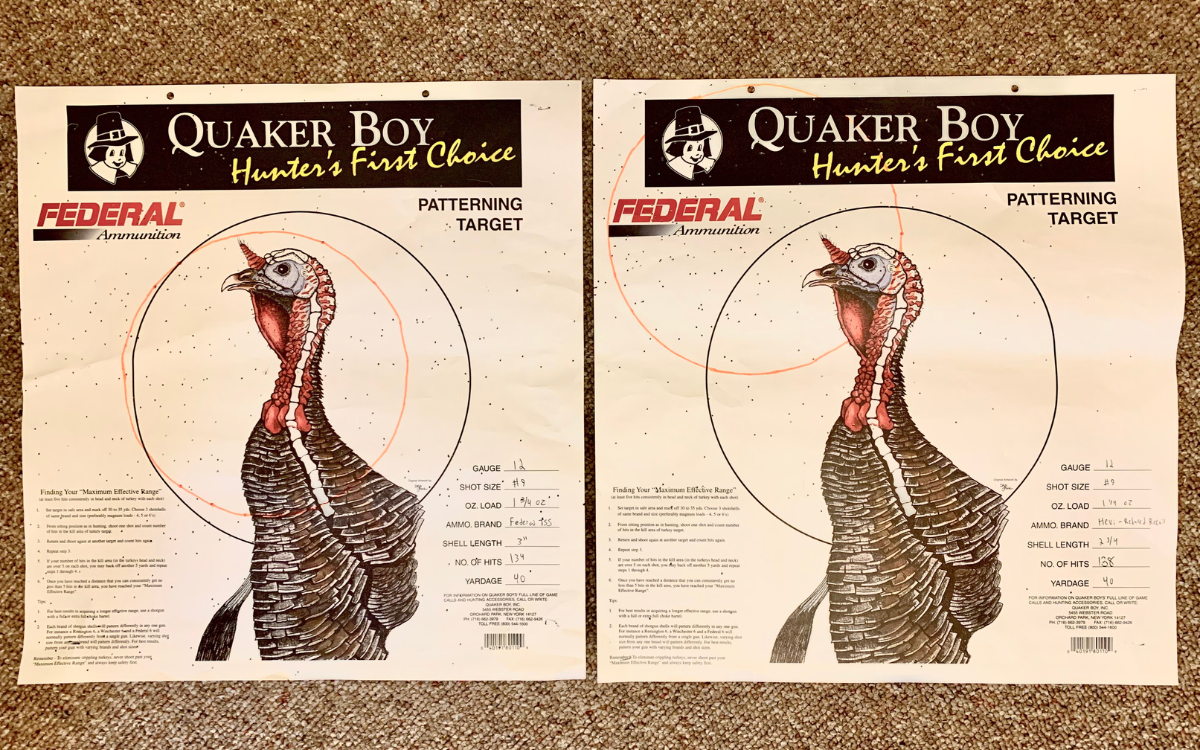
The 40-yard test was perhaps the most surprising. The Federal Heavyweight had 134 hits in the 10-inch circle, while the Hevi-18 Reduced Recoil had 138 hits. To have the Hevi-18 outperform the Federal Heavyweight at 40 yards was impressive. Not only was it a better shot experience, but also offered better performance at this range. With that being said, if you look at the two paper targets above, the Federal Heavyweight seemed to have a much wider spread whereas the Hevi-18 Reduced Recoil spread out more vertically. Either way, I was impressed by the performance of both loads at 40 yards.
50-Yard Test Results
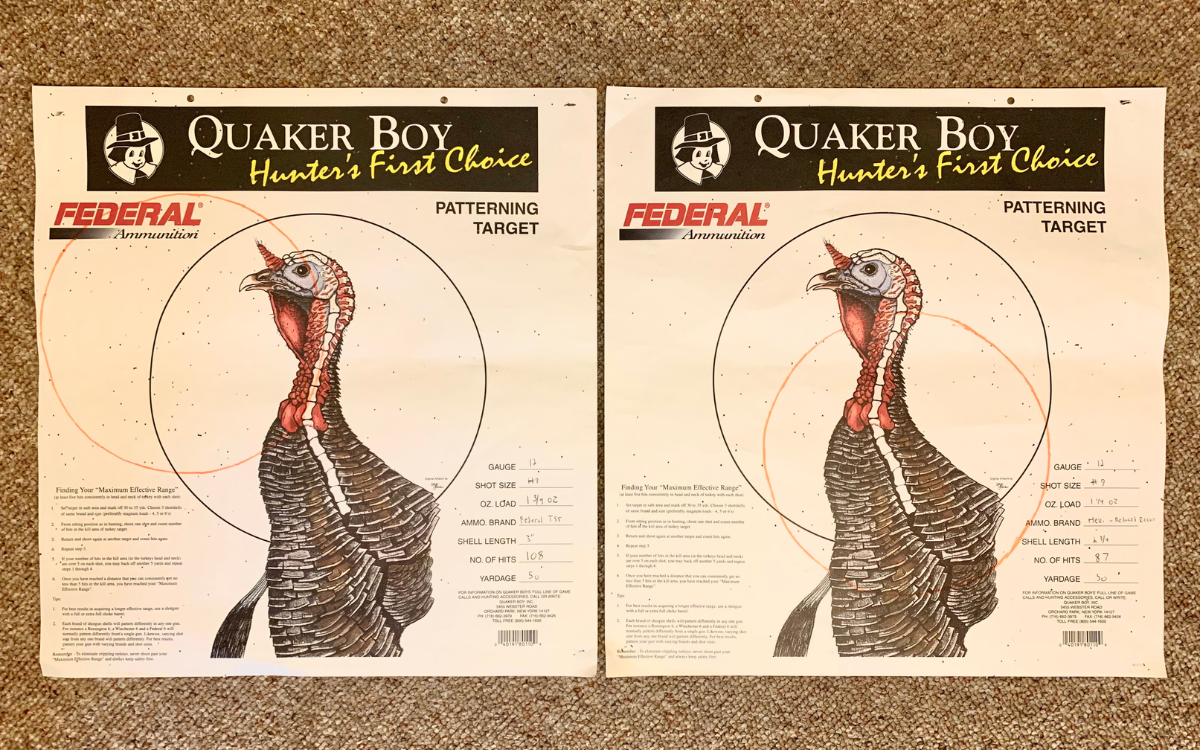
At 50 yards, both shells delivered solid patterns yet again. The Federal Heavyweight had 108 hits in the 10-inch circle, while the Hevi-18 Reduced Recoil scored 87 hits. While the Hevi-18 dropped below 100 hits at this range, it remained above 85, which in my opinion is still a strong pattern. However with the lower velocity, you must start considering penetration. I would not push these loads past 50 yards. In fact, I’m not interested in shooting turkeys beyond 50 with any loads. Folks who do want to shoot at longer ranges, should opt for magnum TSS turkey loads.
70-Yard Test Results
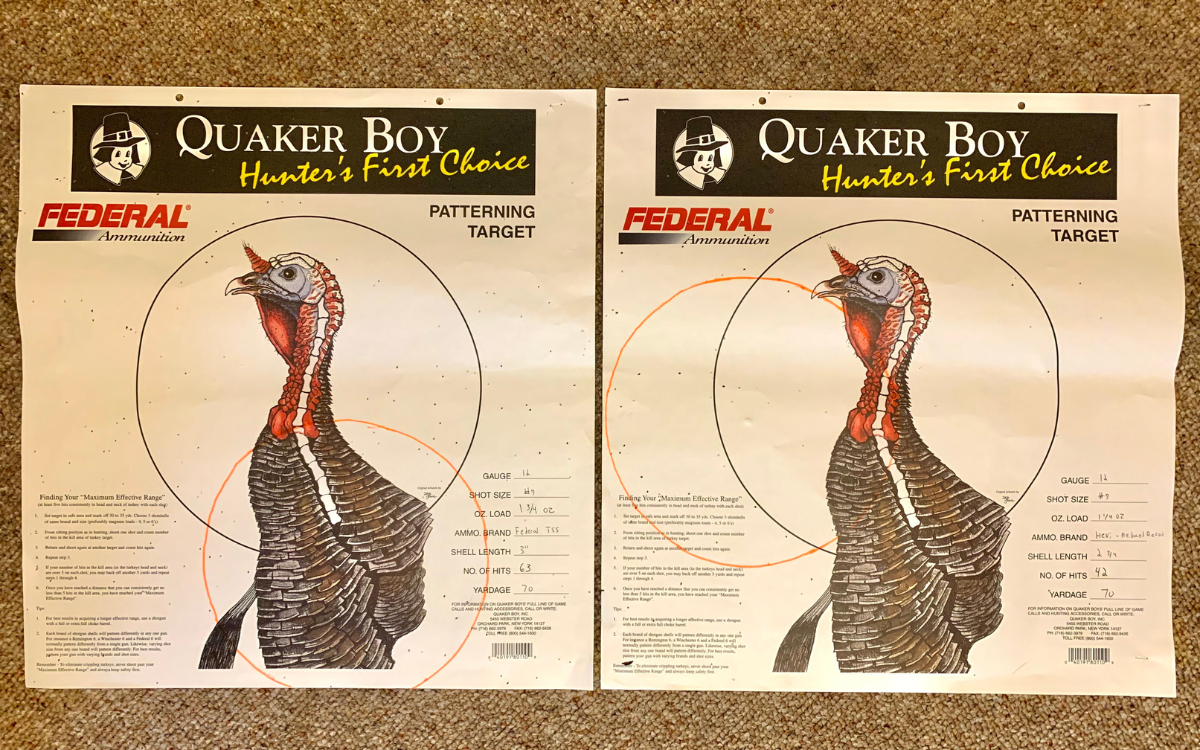
While I would not shoot a turkey at 70 yards, it was worthwhile to test both loads at this range. The Federal Heavyweight had 63 hits in the 10-inch circle, while the Hevi-18 Reduced Recoil had 42 hits. Could both of these loads end up killing a gobbler at 70 yards? Certainly, but I know I won’t be testing that theory in the field. Of course these patterns could be tightened by experimenting with different choke options. But still, shooting turkeys at long distances increases the likelihood of wounding a bird.
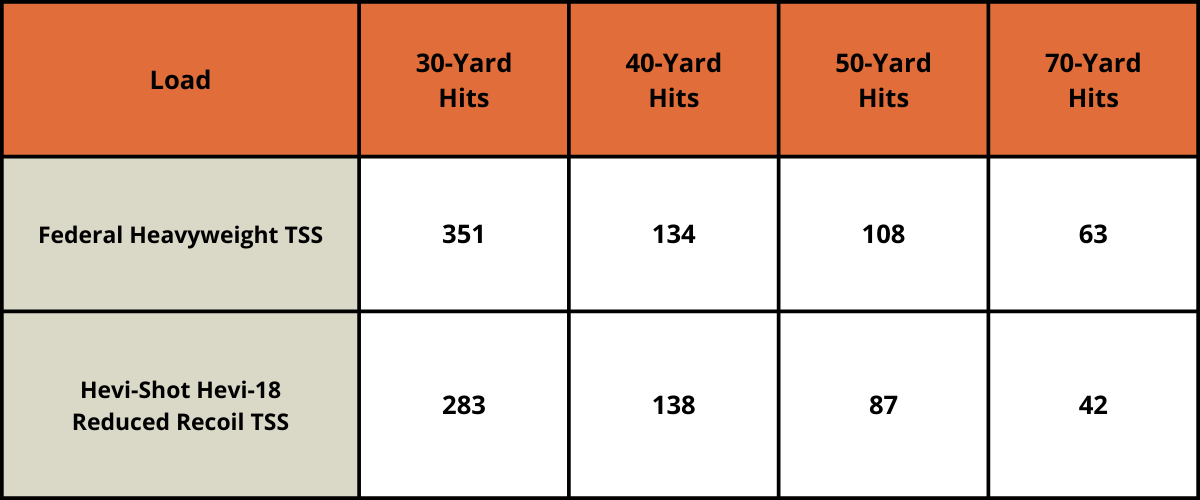
Do Reduced Recoil Turkey Loads Have a Place?
Overall, I was incredibly pleased with the performance and shot experience while comparing the Hevi-Shot Hevi-18 Reduced Recoil loads to the Federal Heavyweight. They had similar performance out to 50 yards, but the Hevi-Shot loads delivered significantly less recoil. That’s not going to matter for many turkey hunters who will undoubtedly argue: “you won’t even feel it while you’re shooting at a bird.”
That may be true, but recoil affects all shooters, even turkey hunters. If you’re looking to save your shoulder (and avoid developing a bad flinch) going with a lighter kicking load makes sense. Maybe stepping down to a .410 turkey gun or a 28-gauge seems too extreme. If that’s the case, consider these new loads from Hevi-Shot a mild middle ground.

